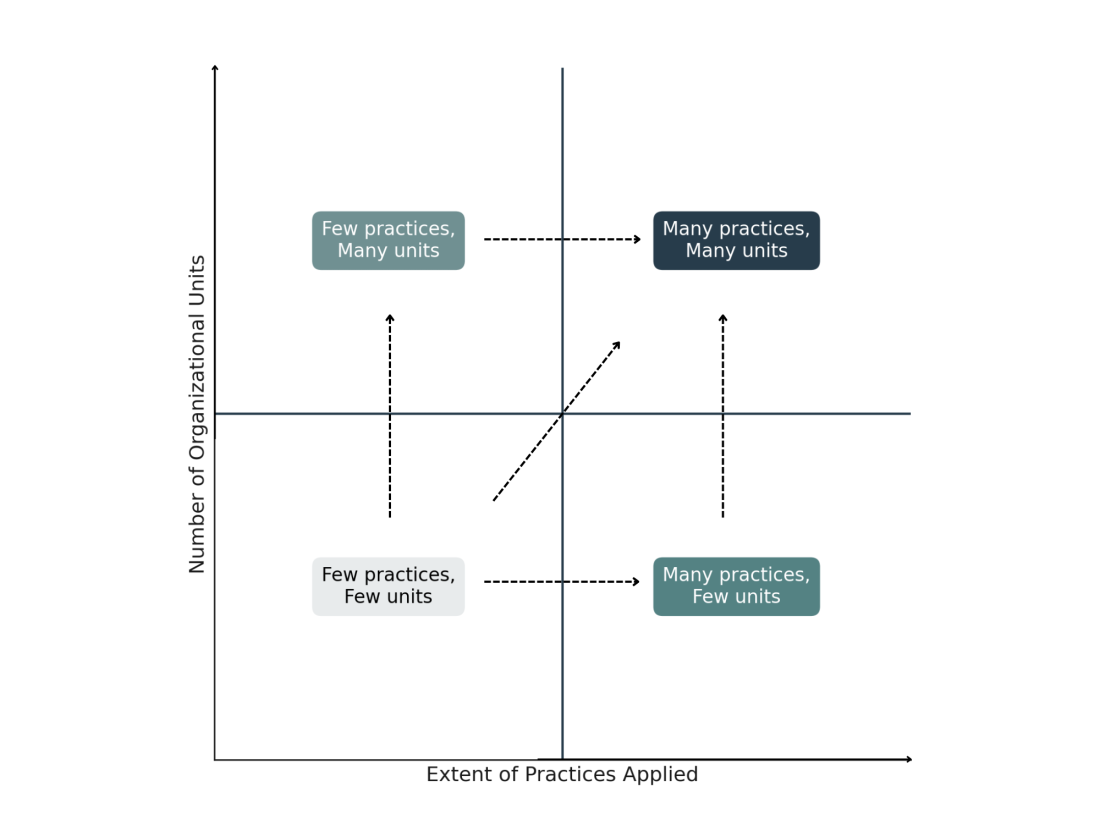Why Management Innovations Succeed – or Struggle
Most organizations today recognize that management innovations (MIs) are not just nice-to-have — they are a necessity. New ways of working are needed to stay competitive, to adapt to complexity, and to deliver results in an uncertain world.
But if MIs are so important, why do so many organizations struggle to make them stick? Why do some new practices thrive while others quietly fade away after the initial enthusiasm?
This question has been at the heart of a research project led by Aarhus University, which followed 17 Danish organizations as they adopted a new project management methodology: Half Double.
Half Double as a management innovation
Half Double was chosen as the research case because it represents a novel set of practices designed to increase impact, speed, and leadership in projects. From 2015 to 2019, the researchers tracked how Half Double was introduced, used, adapted, and sometimes rolled back in these organizations.
The result is a new process-based model for understanding how management innovations travel inside organizations — not just at the moment of adoption, but over time.
A process view on adoption
The study builds on 17 longitudinal cases from Danish organizations, all introducing the Half Double methodology as a means of management innovation over several years. Instead of treating adoption as a one-time decision, the researchers viewed it as a process unfolding over time — shaped by people, leadership support, organizational culture, and context.
To make sense of these journeys, the researchers propose a 2x2 model that maps adoption along two dimensions:
x) Extent of practices applied (few to many) and y) Number of organizational units adopting them (few to many)
This framework reveals how innovations travel within organizations — sometimes spreading, sometimes shrinking, and often transforming along the way.




